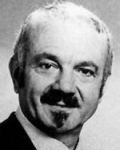
Pisces
(19 February to 20 march)
Closely related to the feet, dancing comes naturally to Pisces. Their emphasis in dance will be the flow between one partner and the other.
The lady with the most exquisit tango shoes at a milonga will almost certainly be Pisces.
Pisces are known to be daydreamers. While following a Pisces leader you may find his inner beat to be far from being in time with the music actually played.
Pisces often have brilliant and original ideas for improvising with tango figures and decorations.
But to implement these ideas they need a dance partner with a different star sign.

Ástor Piazzolla
famous Pisces
in Argentine tango
Ástor Pantaleón Piazzolla was born on 11 March 1921 in Mar del Plata, a coastal village over 400 kilometers south of Buenos Aires.
His parents were of Italian background. Soon after birth, tragedy struck: his right leg became terribly damaged due to polio.
As an infant he undergoes repeated operations, but his damaged leg would remain slightly shorter than the other.
At the age of four Ástor's family moves to the USA and ultimately settles in New York.
Here he learns to speak English with a New York accent, which he would retain for the rest of his life. In 1930 the Piazzolla family returns to Mar del Plata.
But after nine months in Argentina, the family left for New York again.
Tango was a major influence on young Piazzolla at that time, aside from his many other interests. At one point Ástor decided to be a boxer.
But this 'career' came to a quick end after losing matches against his friends Rocky Graziano and Jake La Motta.
Whilst enjoying the life of New York, Ástor's father Vicente yearns to return to Argentina. And so they do in 1937.
The Piazzolla family settles again in Mar de Plata, where Vicente opens a bar and a bicycle store.
In 1938 Ástor decides to move to Buenos Aires to try his luck.
And luck came his way in 1939 when he was invited to play the bandoneón in one of the major tango orchestras of that time: the Anibal Troilo orchestra.
El Tigre del Bandoneón (The Tiger of the Bandoneón) became Ástor's nickname.
In 1944 Piazzolla leaves Troilo's orchestra. The next two years he leads orchestras that accompany the famous singer Francisco Fiorentino.
After that he forms the Ástor Piazzolla Y Su Orchestra Tipica (also known as The 1946 Band) which he leads from 1946 to 1949.
At this time Ástor introduces fugues, counterpoints, and eccentric harmonic forms into his music, for which - eventually - he would become world famous.
Because the general public continued to reject him he shifted his focus of interest to jazz and classical music.
In 1954 Ástor and his wife left their two children (aged 10 and 11) behind with Piazzolla's parents and travelled to Paris to study classical music.
However, his French teacher Nadia Boulanger made him shift his focus back to tango again.
Back in Argentina, Piazzolla formed his Orquesta de Cuerdas and his Octeto Buenos Aires in 1955.
With his Octeto Ástor created a new sound comparable to chamber music with jazz-like improvisations, but without vocals.
Piazzolla's new approach to tango music, made him a controversial figure in Argentina both musically and politically.
But in Europe and North America his music gained acceptance and appreciation.
In 1958 he disbanded both the Octeto and the String Orchestra and returned to New York City with his family where he struggled to make a living as a musician and arranger.
He received the news of the death of his father in October 1959 whilst performing with Juan Carlos Copes and María Nieves in Puerto Rico.
On his return to New York City a few days later, he asked to be left alone in his apartment and in less than an hour wrote his famous tango,
Adiós Nonino, in homage to his father.
In 1960 he returns to Buenos Aires and from this point on his career accelerated. He became a prolific composer of tango music, that is:
tango for the ear, not for the feet. Ástor toured all over the world, playing in magnificent venues with excellent orchestras.
He recorded a multitude of discs, both live and studio made. As a result Ástor Piazzolla became celebrated throughout the world for his 'Tango Nuevo':
tango music infused with jazz rhythms and classical music patterns.
In 1990 Piazzolla suffered a massive stroke leaving him severely debilitated. Two years later Ástor died in Buenos Aires on 4 July 1992.

